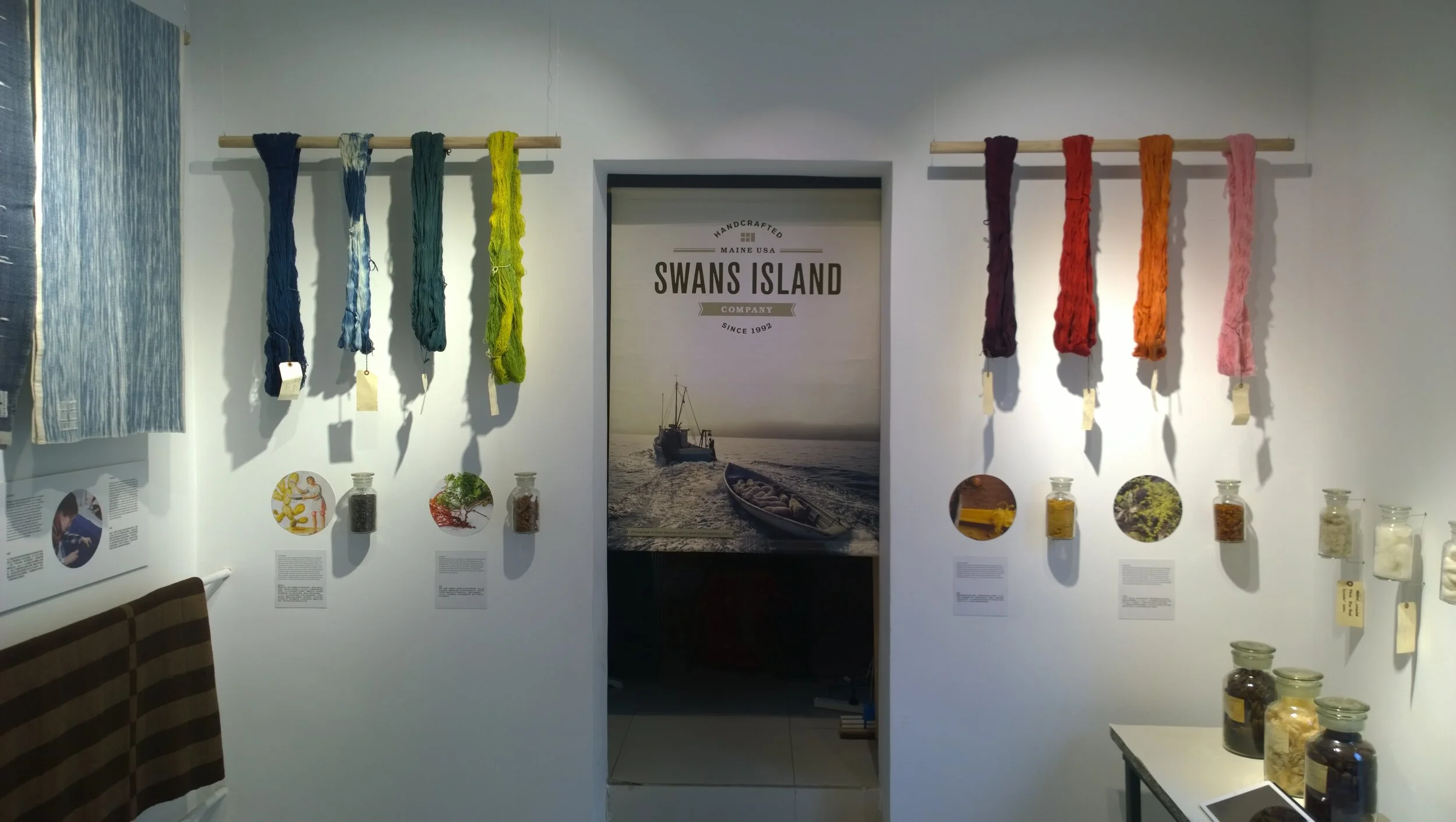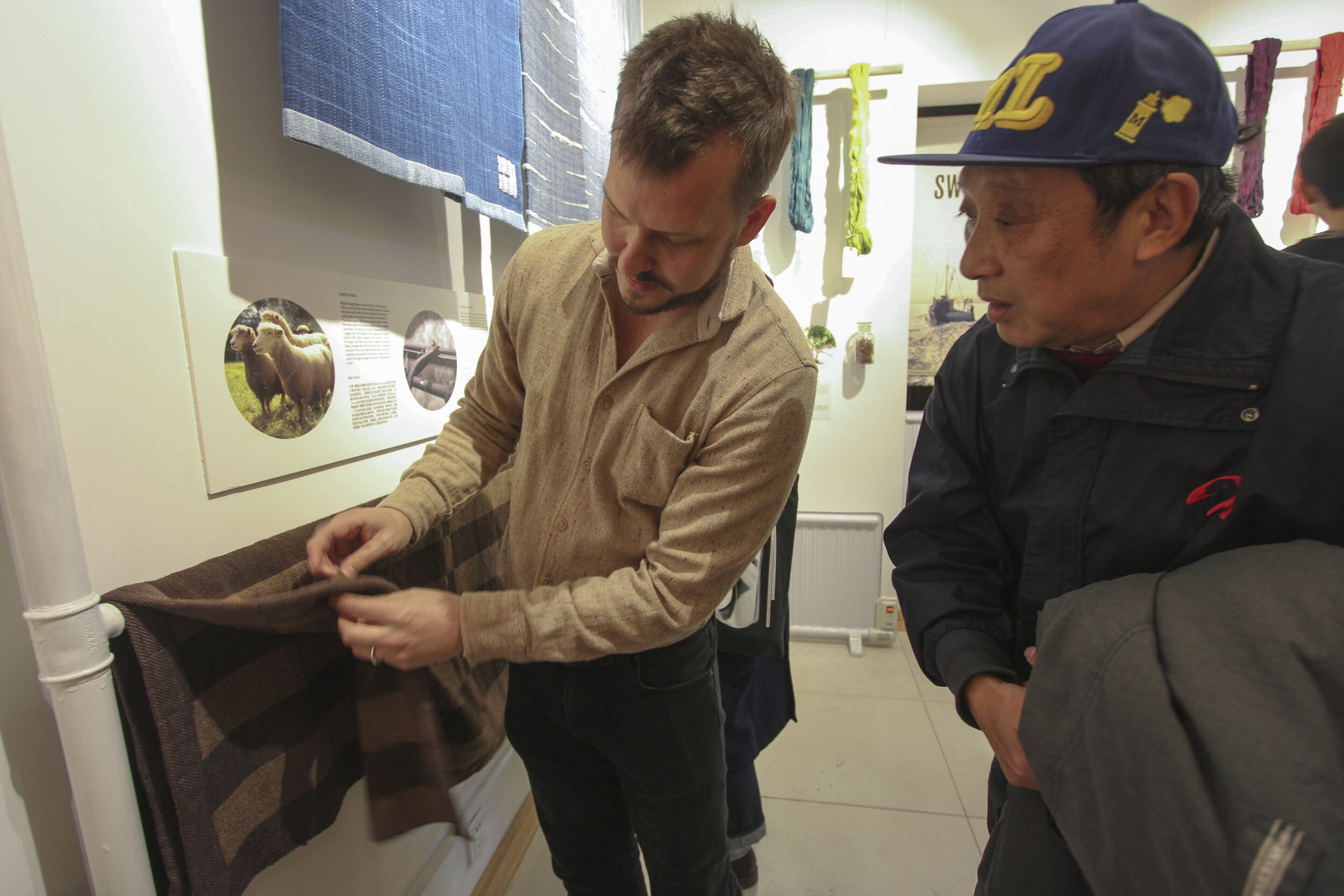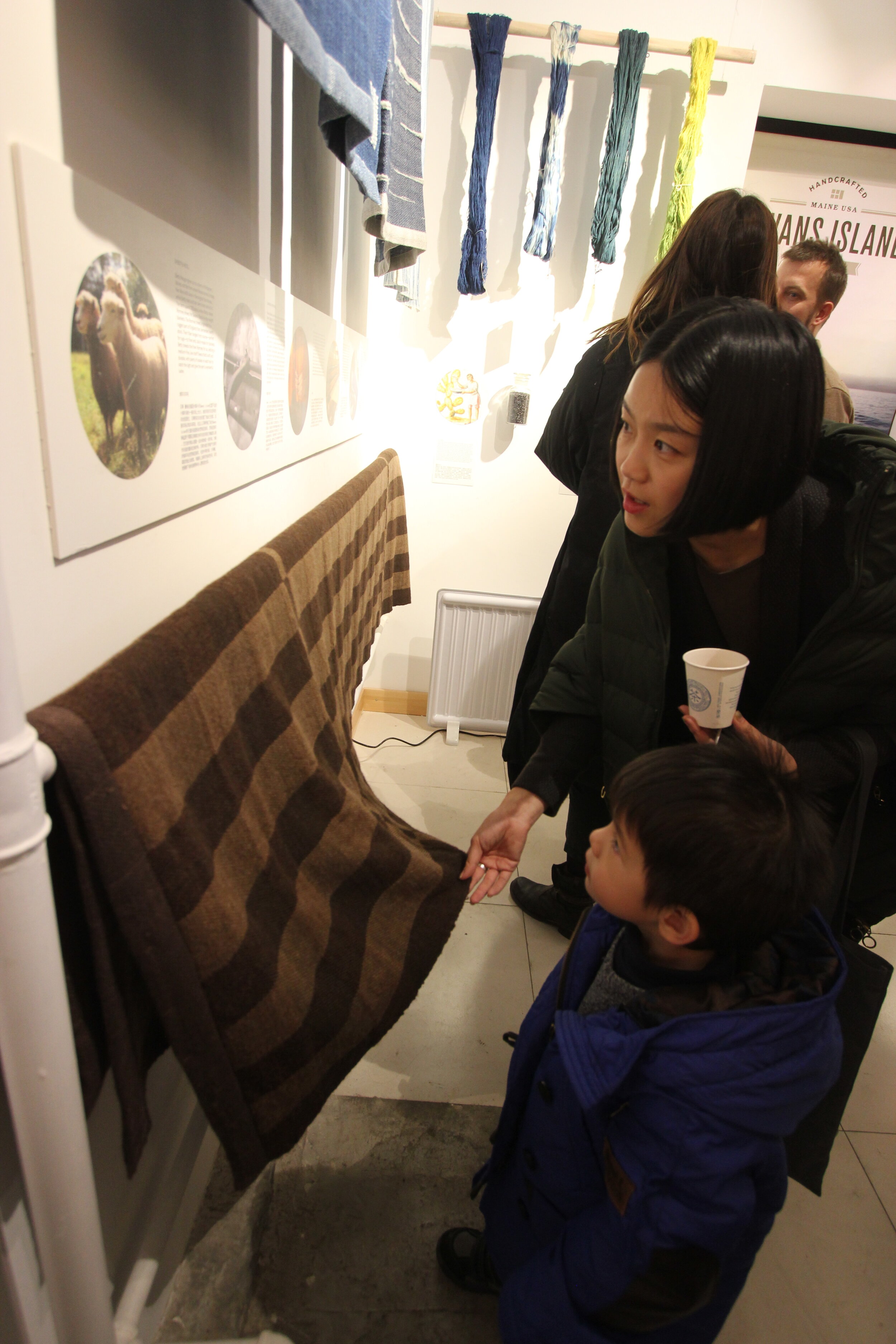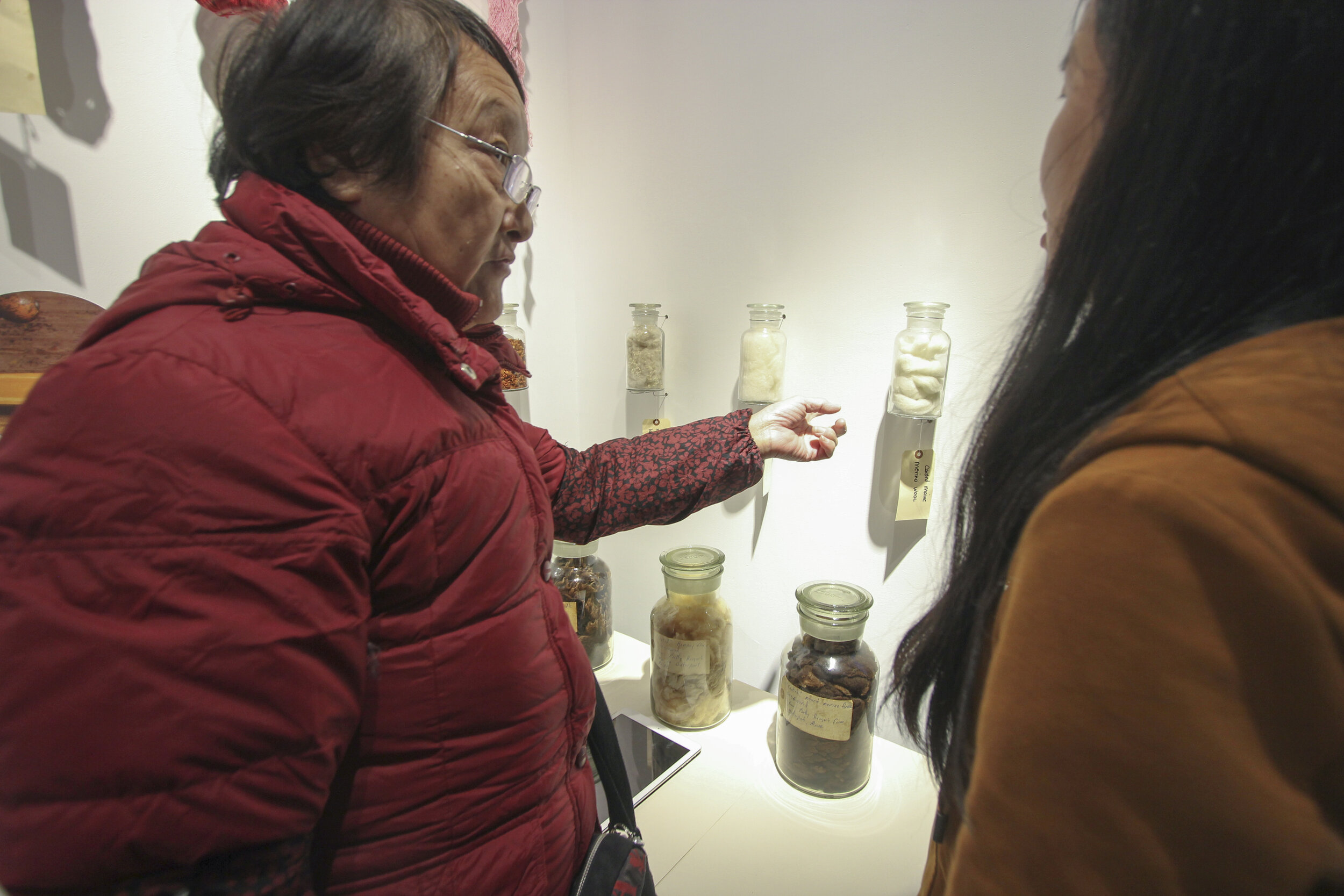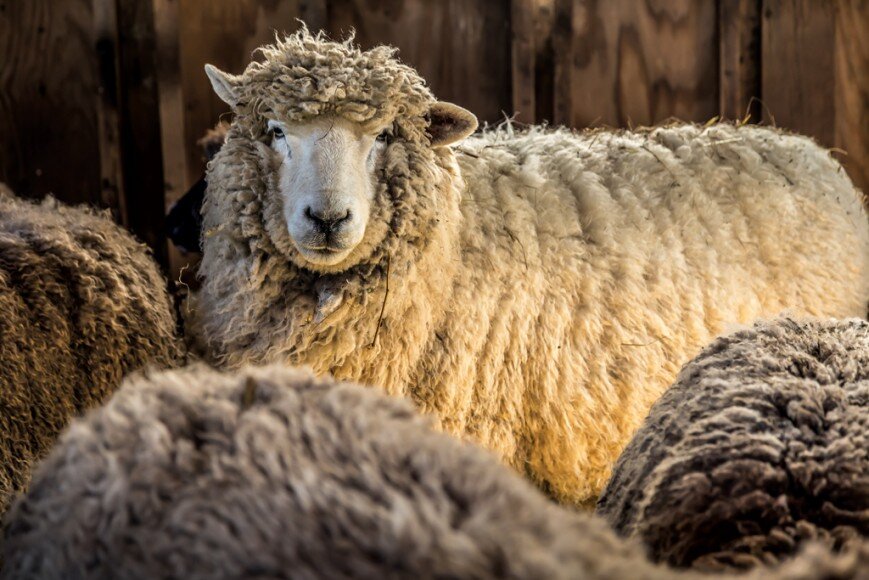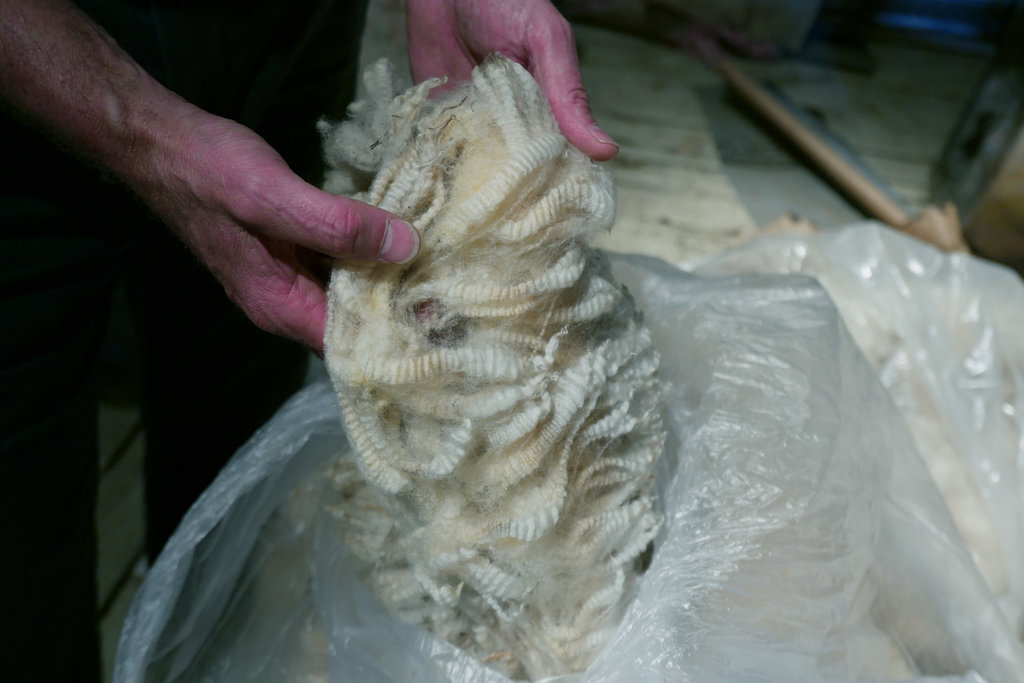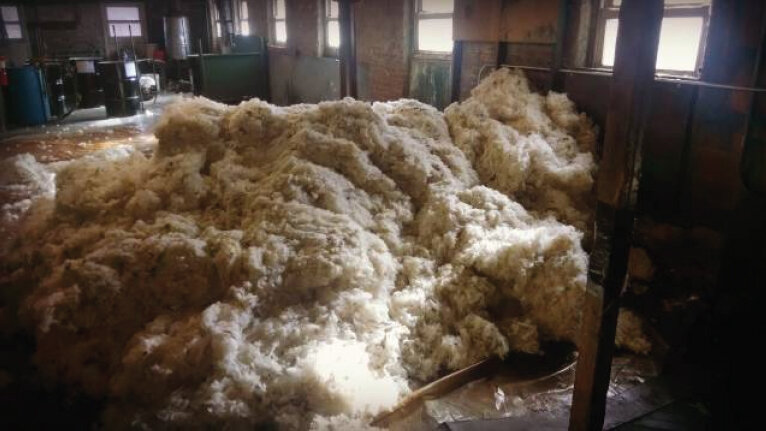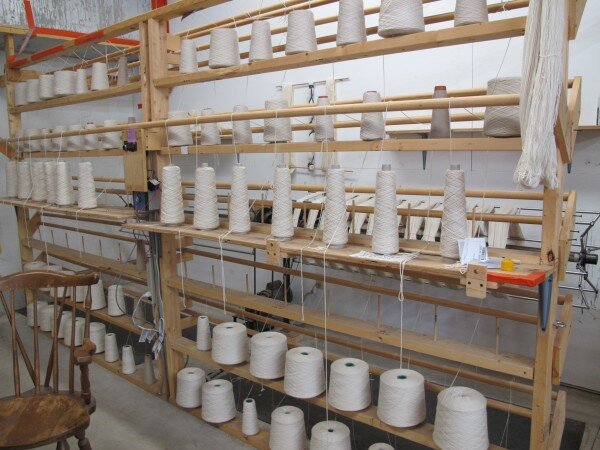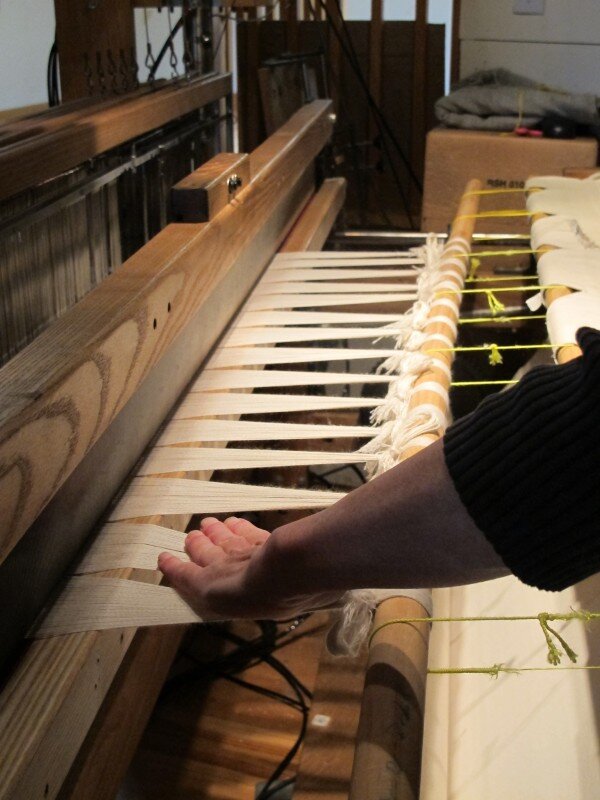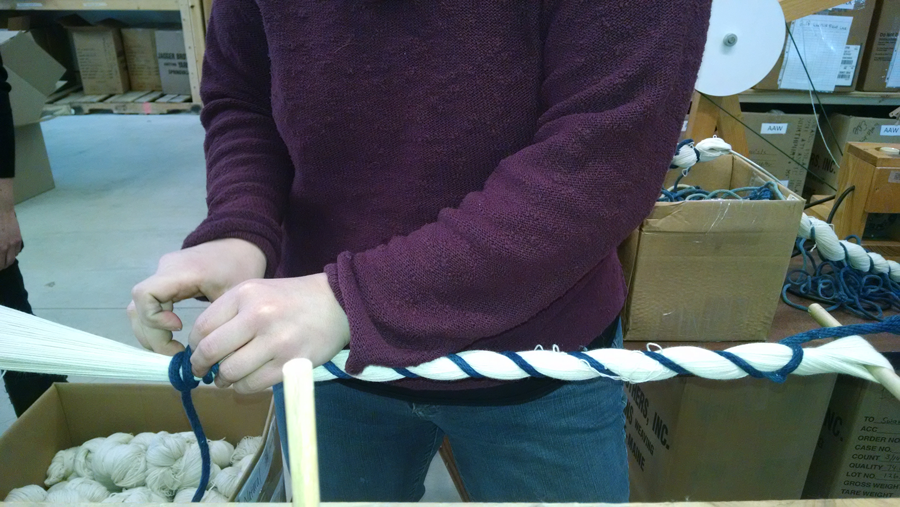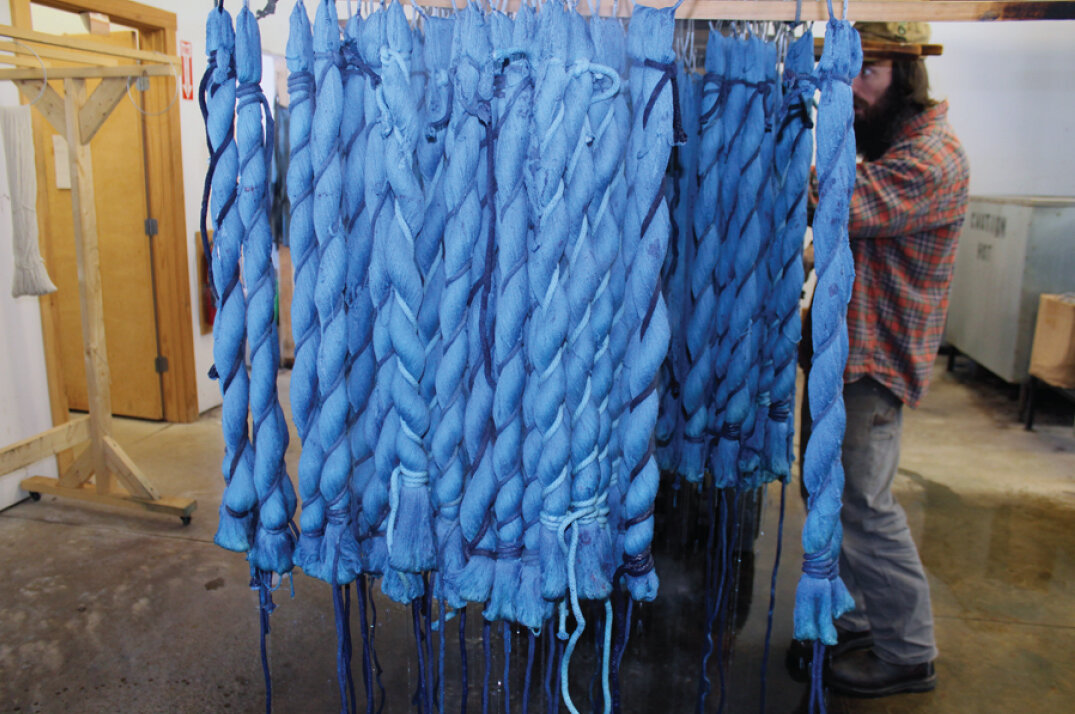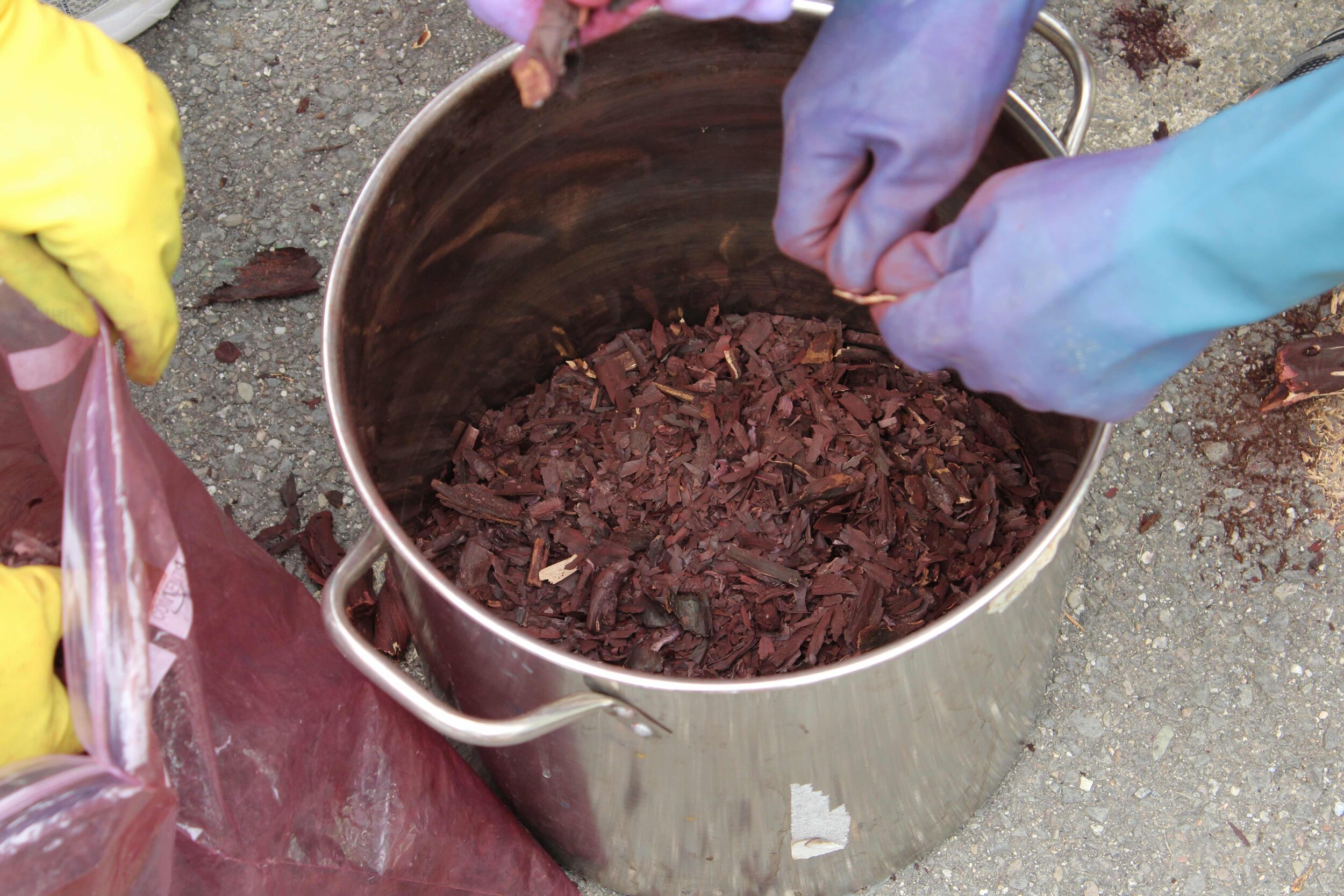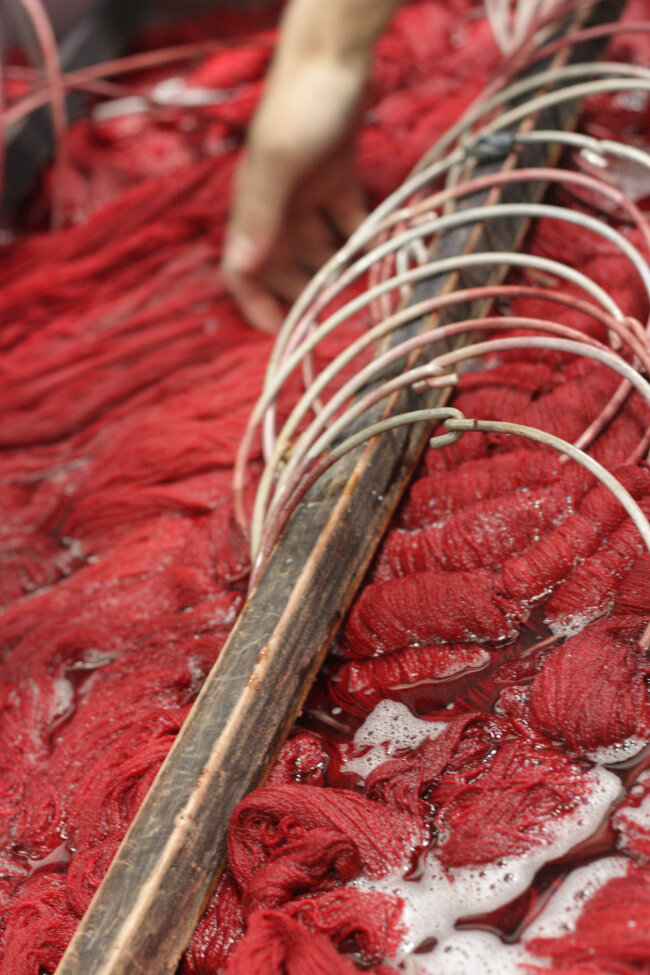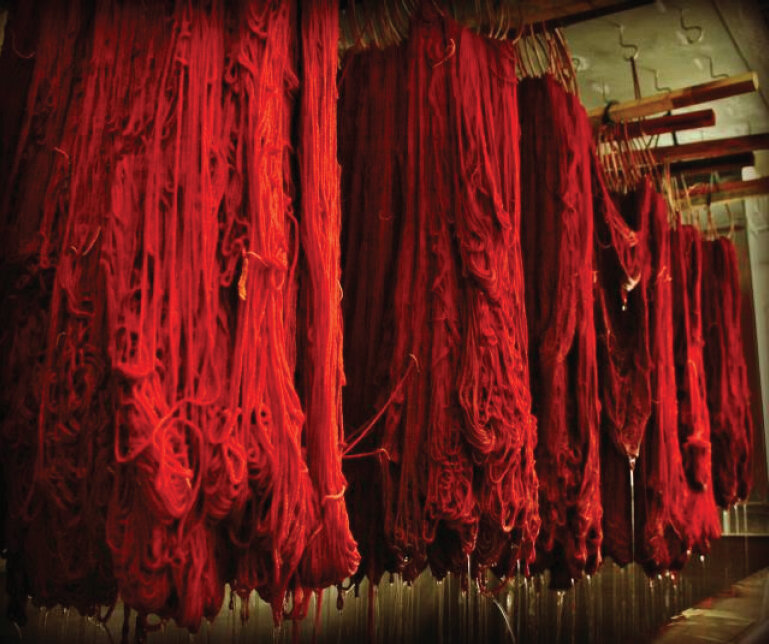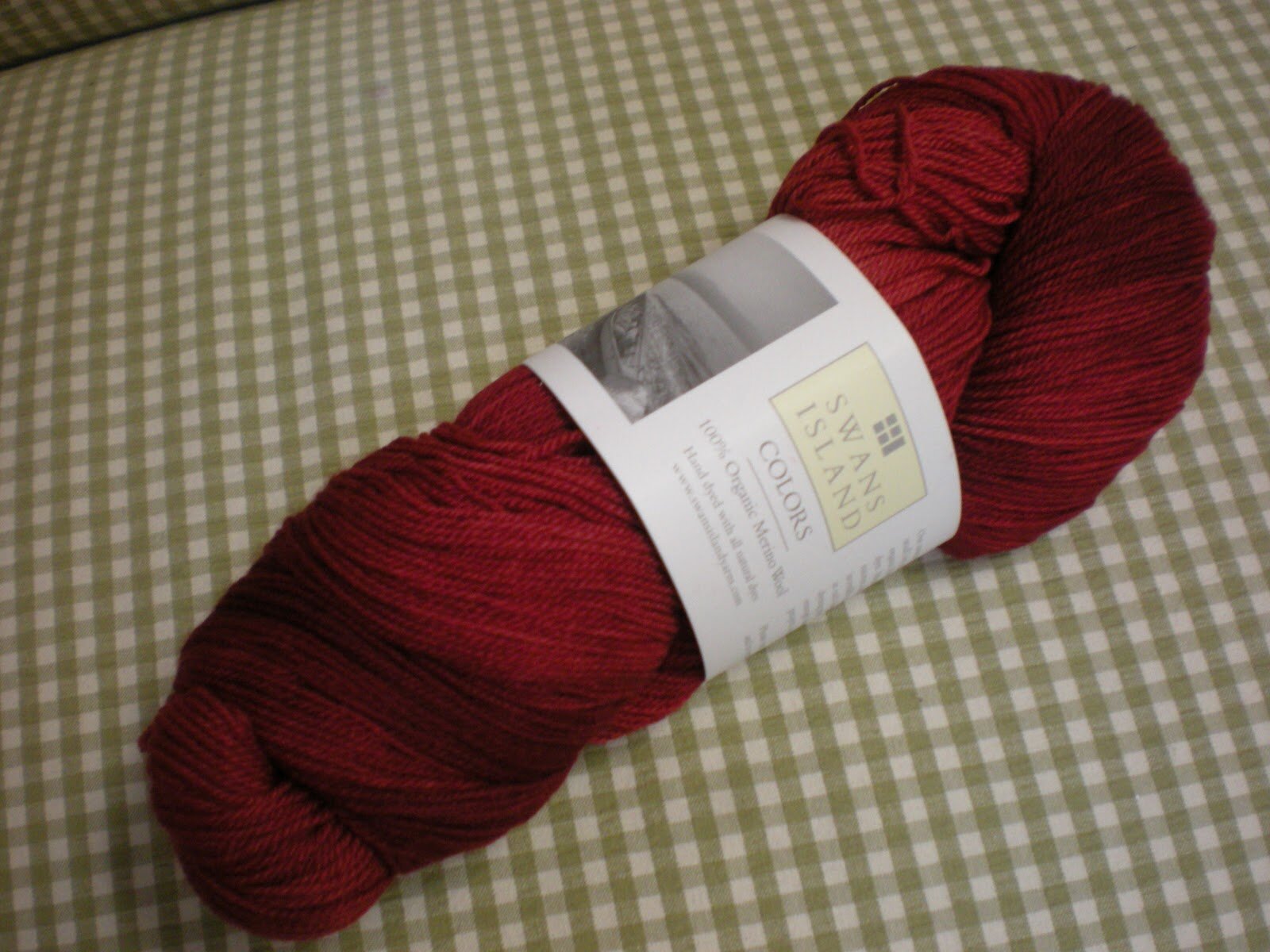Swans Island
In 2015 ATLAS had the opportunity of meeting Bill Laurita, the CEO of the Swans Island Company, who was visiting Beijing. The idea arose for ATLAS to host a small exhibition about Swans Island to introduce the brand to the design community in China. The heritage textile company is unique in the United States — using wool from sheep local to Maine and a variety of natural dyes, they produce a range of carefully handwoven products, most famously their blankets. Swans Island off the coast of Maine was historically a wool island but had been without sheep for a long time. The founders John and Carolyn Grace brought sheep to the island on boats and began to reconstruct traditional textile practices that had long since died away.
“Swans Island Company was started by John and Carolyn Grace. They were middle aged practicing attorneys living in Cambridge, MA attempting to figure out what their next act would be. Tired of the daily grind and with a summer home on Swans Island, they knew there had to be something more. John had some wool blankets that had been handed down through generations of his family. These durable and simplistic objects inspired the couple to wonder who still makes something so basic that it could almost be overlooked?
Thus was born a company whose reason for being was to produce modern day heirlooms that harken to a time when families handed down trusted objects of simple beauty and great utility.
We continue to use many of the same farmers and processes developed in those early years on the island. The same commitment to hand weaving, hand dying and hand finishing our products carry through the company now in its 26th year.” —Bill Laurita, CEO of Swans Island Company (from the company website)
The company also looked to support local artists in Maine by helping them with the “day job” of hand weaving done alongside their own artistic practices. More than just a company, Swans Island is a a project about community, the landscape, and making sure quality textiles are still possible in today’s world.
The exhibit focused on three areas, one the raw wool shorn form the sheep of Maine and processed into yarn, natural dye materials, processes, and aesthetic qualities, and the hand-woven blankets themselves objects of art. Natural dye in particular is a speciality of Swans Island as the company has the largest commercial natural dye house in US and has remarkable expertise in the often difficult and unpredictable practice of natural dying. A global history of the world-wide trade in color can be read through their dyestuffs, not local - but rather sourced globally - the natural dyes, plant, insect, mineral, tell an incredible story of the way color has traveled through time and space to shape aesthetics across many cultures.
The large brown textile is especially notable — woven from raw, un-dyed, wool the blanket is rare as these tones of brown sheep are not in abundance and the wool must be collected over time.
Because northern China has a long history of sheep herding and wool production it was interesting to bring a discussion of wool and craft from rural Maine to the community in Beijing. The exhibit sparked dialogue about a variety of cultivation and craft practices that require a close and attentive relationship to the land.
More about Swans Island and their textile production….



